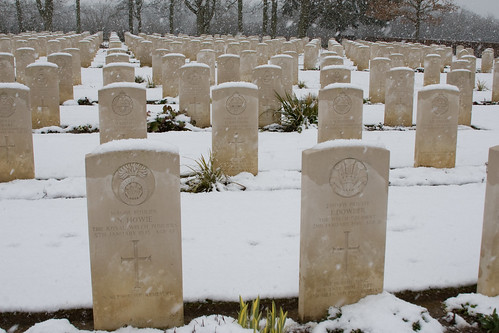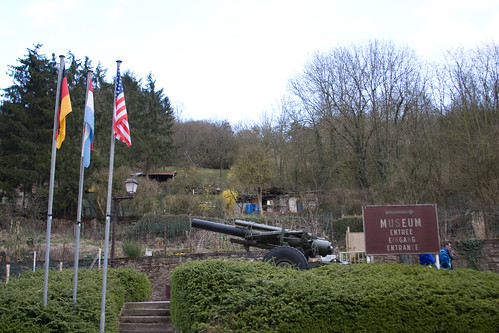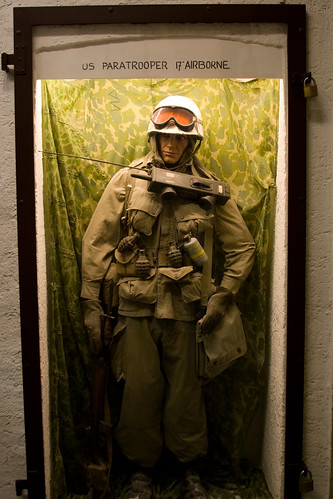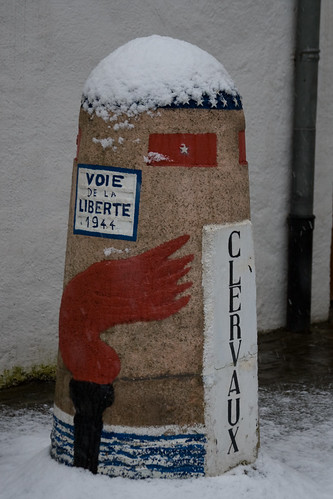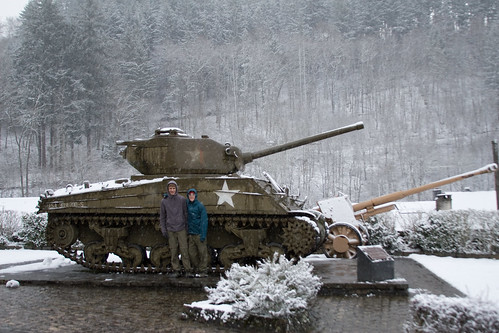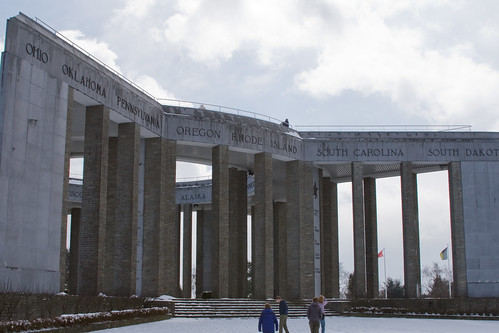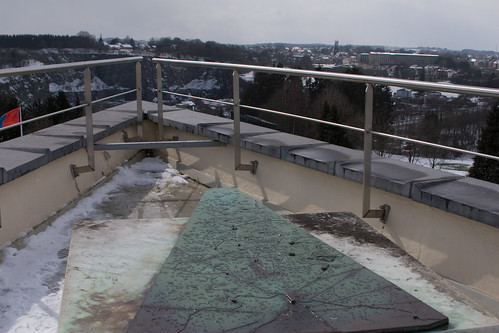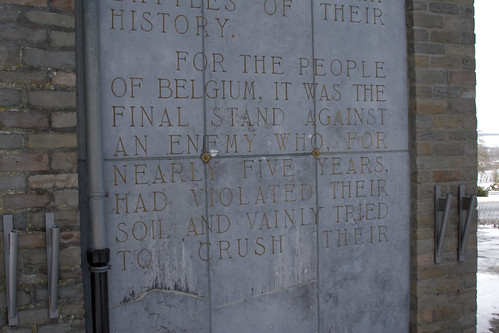Europe 2008 - Bulge Tour, Day 2
Day 2 of our Bulge tour was geared more to accommodating our tourists stops, so there was not much rhyme or reason to the sites we visited. We ranged from Hotton to Diekirch (Luxembourg) to Bastogne.
After visiting the caves near Hotton, we stopped by the Hotton War Cemetery, which commemorates over 600 casualties from the Commonwealth countries. The scene was all the more striking with the 2 inches of fresh snow that had fallen in the past hour. Hotton marked the limit of General Manteuffel's advance:
The commander of the 116th Panzer Division, as well as General Manteuffel, would later pay tribute to "the bravery of the American engineers" at Hotton. They had reason for this acknowledgment (in which they could have included signal and service troops, unknown gun and tank crews) because the failure to secure the Hotton bridge was decisive in the future history of the LVIII Panzer Corps. Credit must also go to the Combat Command Reserve at Soy whose fire, as the enemy acknowledged, caught Kampfgruppe Bayer in the flank and checkmated its single-minded employment against Hotton. Finally, a share in the successful defense of the Hotton bridge should be assigned those elements of the three 3d Armored task forces which, on the 21st, had engaged the bulk of the 116th Panzer Division and 560th Volks Grenadier Division and prevented a wholesale advance into the Hotton sector.
_
_Source: Wikisource, The Ardennes: Battle of the Bulge/Chapter XVI
Next it was time to leave Belgium and explore the northeast portion of Luxembourg. While there are Bulge museums in many of the towns in Belgium and Luxembourg, my research indicated that the National Museum of Military History at Diekirch is one of the best (also check out their suggested Bulge tours - some great trips if you want to focus on the southern shoulder).
The museum is deceptively large - when we first arrived we were a bit disappointed as we saw the first room, which appeared to be a somewhat random collection of military equipment tightly packed into a large hanger-style room. To our surprise, the museum went on and on with an amazing array of diorama-style displays and probably the best collection of equipment and armament from WWII that I've ever seen. The boys had fun pointing out the various weapons they've had the pleasure of firing in Call of Duty.
My great uncle Charlie served in the 17th Airborne in the Bulge (he was a Lt) and was shot in the foot during the push-back from the north in January. He served under the controversial Montgomery for the bulk of his time in the Bulge.
We made a brief stop in Clervaux and found a marker for the Liberty Road, marking the allied trail of liberation from France through Belgium and Luxembourg.
We also made the obligatory stop at the tank and artillery static display near Clervaux.
We ended the day in Bastogne, perhaps the most notable and recognizable town from the battle. Bastogne was a key objective for the German advance because of its strategic location at the convergence of seven key roads. By December 20, 1944 the town was surrounded by German forces with elements of the 101st Airborne Division digging in to defend what would become known as the Siege of Bastogne.
North of town is the impressive Mardasson Memorial, a dramatic tribute to the USA from Belgium.
The top of the memorial offers dramatic views of the Bastogne landscape to the south, with annotated maps showing key actions and events during the battle.
This portion of the memorial best describes the Belgian view of the significance of the battle and liberation of their country.

